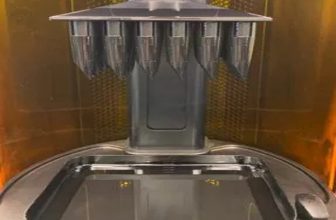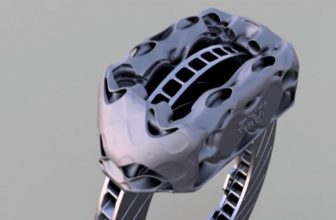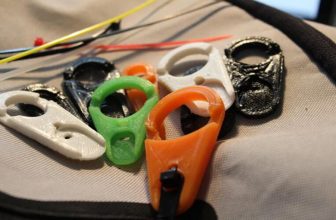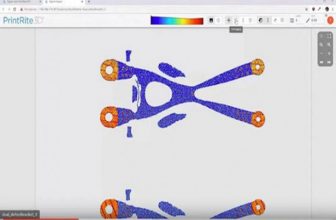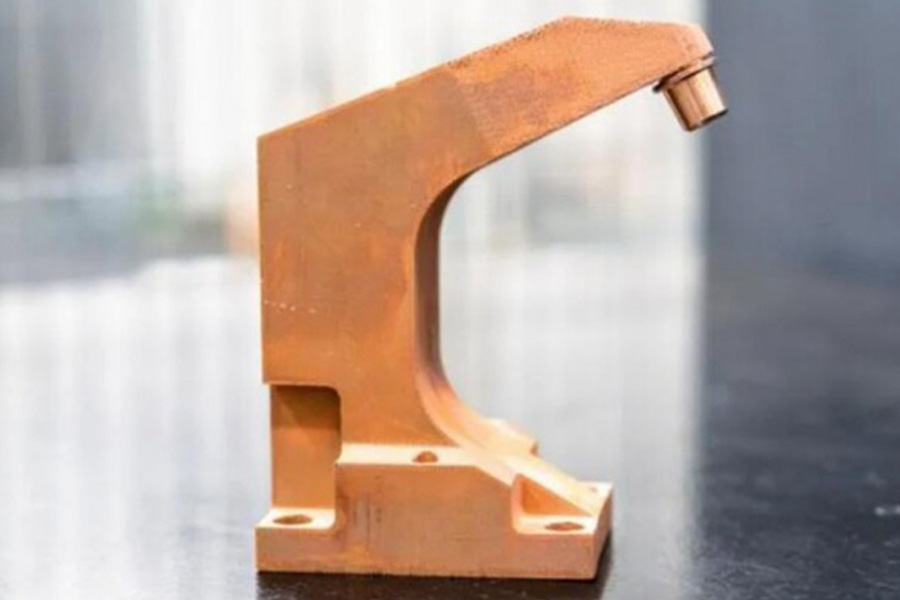
Pure copper and copper alloys are widely used in electric power, heat dissipation, pipelines, decoration and other fields due to their excellent electrical conductivity, thermal conductivity, corrosion resistance and toughness. Some copper alloy materials have good electrical conductivity, thermal conductivity and relatively With high strength, it is widely used in the manufacture of electronic, aviation and aerospace engine combustion chamber components. However, with the increasing demand for components with complex structures on the application side, traditional processing techniques have gradually been unable to meet all the requirements.
Metal 3D printing technology can manufacture complex functional integrated parts. This advantage can also be reflected in the field of copper metal manufacturing. For example, in the field of copper inductor coil manufacturing, metal 3D printing technology can be used to replace traditional manufacturing processes. Manufacture complex inductance coils to avoid the need for assembly and the deficiencies caused by welding. Regarding copper 3D printing technology, it is showing an increasingly economic and diverse development trend. Markforged has launched the latest material for its metal X printer-copper. In this issue, we will learn more about the major features of the Markforged solution.
Easier and faster
Markforged has launched a copper printing solution for its metal X printer that makes 3D printing pure copper very simple. With the Markforged Metal X system, users can easily manufacture complex parts with high electrical conductivity and thermal conductivity, which were previously expensive , Time-consuming or impossible to manufacture.
Markforged copper material contains more than 99.8% pure copper, which has excellent thermal and electrical conductivity and high ductility. Markforged copper can be used where heat or electricity is required, replacing the challenge of traditional manufacturing processes that are too expensive or cannot achieve complex shapes.
The printing convenience brought by the copper material introduced by Markforged is as follows:
A platform
3D printing with Markforged copper materials is the same process as other materials. The existing hardware and software systems are used for printing on the Metal X system. Select “Copper” in the material drop-down menu of the cloud-based slicing software Eiger, and then start printing immediately. It currently takes about 10 minutes to switch materials on Metal X.
Easy to print
Metal X uses fuse manufacturing (FFF) technology to make 3D printing copper simple. The copper metal powder is mixed with the binder and processed into filaments. After the 3D printing is completed, the user cleans the parts and dewaxes them, then puts the parts into the furnace, the furnace removes the residual binder, and then sinters the powder into the final all-metal parts
From heat sinks to custom solder handles, Markforged users can now reinvent the way copper components are manufactured. Users are even trying to use printed parts with complex internal cooling channels. Eliminate brazing or welding of components to reduce costs, improve consistency and eliminate weak links in manufacturing.
Review
Due to the excellent thermal conductivity and reflectivity of copper, this makes it difficult to handle copper metal inside the 3D printer. Although the current selective laser melting (SLM) 3D printing technology can be used to manufacture copper metal powder materials. However, in the process of laser melting, the absorption rate of copper metal is low, and it is difficult for the laser to continuously melt the copper metal powder, which leads to problems such as low forming efficiency and difficult control of metallurgical quality. In addition, the high ductility of copper makes post-processing tasks such as removing excess powder more difficult.
Previously, Fraunhofer ILT launched a green laser solution, which is shorter than the wavelength of 1μm, at 515nm. This means less laser power output, and in addition, the laser beam can be more precisely focused, enabling it to use the new SLM process to manufacture finer parts.
However, Markforged’s copper 3D printing process is not the same as the green laser solution launched by Fraunhofer ILT. It is different from the powder bed selective laser melting metal 3D printing process. Markforged uses an extrusion 3D printing technology. The challenge is solved to reduce the cost of automobile production and manufacturing, while improving the efficiency of electric vehicle motors.
In terms of electric vehicles, copper 3D printing also has certain application potential. The electric drive and control system is the core of electric vehicles, and it is also the biggest difference from vehicles with internal combustion engines. The electric drive and control system consists of a drive motor, a power supply, and a motor control device. The other devices of electric vehicles are basically the same as those of internal combustion engine vehicles. The electric drive subsystem is composed of an electric control unit, a controller, an electric motor, a mechanical transmission device and driving wheels. The main energy subsystem consists of the main energy, energy management system and charging system. The auxiliary control subsystem has functions such as power steering, temperature control and auxiliary power supply.


